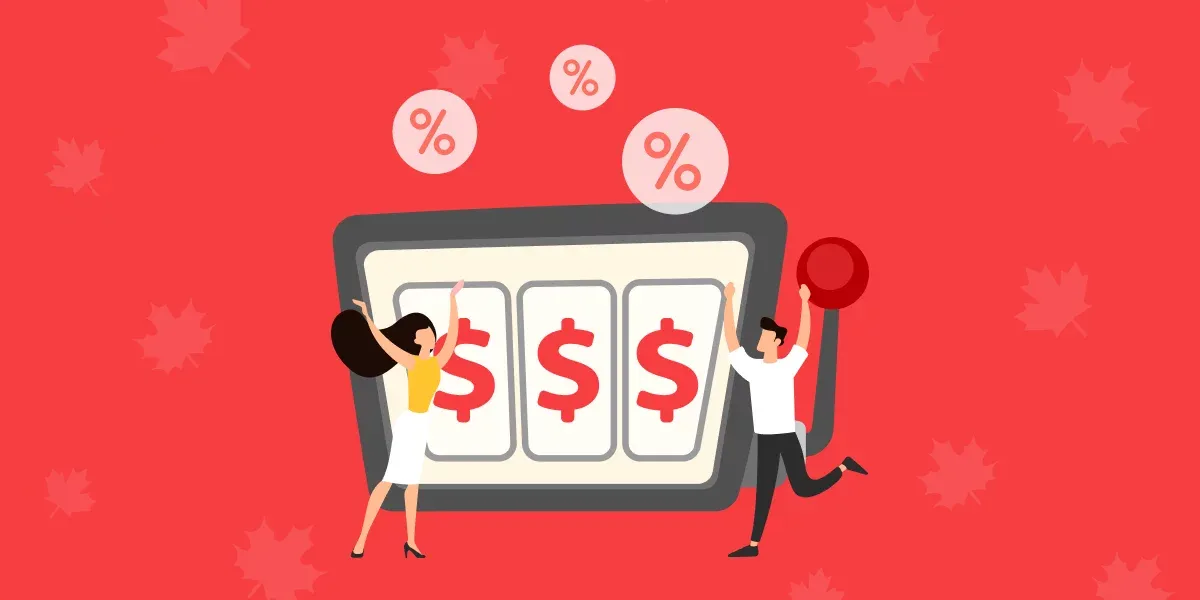What is RTP?

Whatever your ability level, you’ve probably seen the term RTP. Read through our RTP guide to gain a better view of how slot games work and what to expect when playing. The guide may also help you to develop a personal strategy.
Whether you’re a spectator or an expert, online casinos can sometimes be intimidating – slot games are essentially games of math and strategy as well as probability and luck. With the numerous stats and terminology listed in each game’s description, it’s easy to get bogged down wondering what all this information means and how you’re supposed to use it.
So, we’ve devised some handy casino guides to get you in the loop! Let’s start with the essentials.
Whatever your ability level, you’ve probably seen the term RTP, a key figure stated in every slot’s information panel and in our online slot reviews.
RTP stands for Return To Player and is a way to generally predict how a game will perform over time. It is also sometimes referred to as Payout Percentage.
But what does that mean? Is this information important? Is a high RTP better than a low one? Understanding RTP will help you gain a better view of how online slot games work and what to expect when playing – they may also help you to develop a personal strategy.
A Working Definition
Simply put, a game’s RTP indicates how much money it will return to the player compared to how much money the player bets over a long period of gameplay. Typically, RTP is written as a percentage and it’s almost always in the 90-99% range.
For example,
if a game has a RTP of 95%, it means that for every $100 that players bet, the game will eventually return an average of $95 over a long period of play.
But be aware! This figure is not a guarantee. You shouldn’t expect to win the exact RTP value – what would be the fun in that?!
Know that RTP is the average amount of money that a slot game pays out. The actual amount you receive could be far less, or it could be far more – the percentage applies to all players across all time.
Slot games are random!
Wins in slot games are awarded randomly and the return to players individually may not equate to the advertised RTP. You can expect a return in a range between zero and the maximum prize level for each individual play.
And remember – random games are not ‘compensated’. Just because you have had a series of losing plays, it does not mean that you will have a series of winning plays immediately after to even out the odds. Just like a coinflip game of heads or tails, the outcome of one bet is independent of the outcome of another. The game is random and therefore players should only ever stake what they can afford to risk.
House edge
RTP can also be considered as the inverse of a slot’s house edge, a term in casino gaming for how much the casino makes from games.
So, a 95% RTP game has a 5% house edge, because that leftover amount is how much the casino keeps over the course of time. So, RTP is quite important as a gauge of how slots will pay out over time, but it isn’t everything. A higher RTP isn’t always the best thing to go for – it depends how you play.
Volatility and RTP – the higher the better?
There’s no easy answer for this! A higher RTP means that a slot will pay out more on average. These games have a smaller house edge so naturally attract more players, as they can expect a generally higher average rate of wins.
However, slot developers are not known for making slots as generous as possible! If a game has a high RTP then it typically balances out elsewhere. For example, the game may have smaller maximum jackpots in general which come around more often, meaning it has low volatility – and some may consider this less entertaining.
Volatility is a way of indicating how ‘risky’ a game is and is usually listed as low, medium or high. Typically, high volatility slots have a lower RTP because a larger portion of each bet is stored up to pay out those big wins. The risk is higher, the reward is higher. It’s important to consider your volatility preference based on your budget.
The takeaway
RTP is really more relevant for the house than for players as it helps the casino determine how much revenue they will make from their games. The profit from a slot is not a static amount, since players can always win big jackpots, but a percentage that gives an average over time allows casinos to have some idea of what to expect.
For players, it’s more of a measure of how a slot will behave. It’s better to prioritise how entertaining you find a game rather than its RTP percentage as this stat will only make a minor difference for the average player. You can never predict the luck you’ll have, so have fun!
Now you understand RTP, you’re ready to start playing! To find your next favourite site, check out our list of the best online casinos.
Another term worth understanding is wagering requirements. Read our guide on this term to be aware when you’re choosing a casino welcome bonus.


